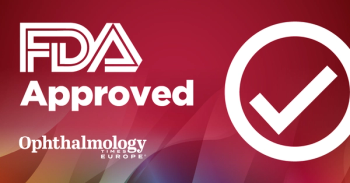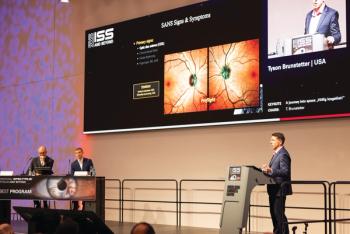
Chemical burns best treated with buffer, IOP spike prevention
What should you be concentrating on with severe corneal burns?
Key Points
In addition, ophthalmologists also should concentrate on preventing IOP spikes in these patients and consider an artificial cornea (Boston Keratoprosthesis, Massachusetts Eye and Ear Infirmary) after the inflammation has subsided.
"There is nothing more discouraging for ophthalmologists than to see a child with an alkali burn," he said. "These burns result in a life of trouble for these patients and, previously, often irreversible blindness."
Standard emergency room treatment for these patients is irrigation with isotonic saline. This approach has been shown to be ineffective, however, according to Dr Dohlman. A recently published study showed that saline did not work to reduce the intracameral pH in rabbits with alkali burns (S. Rihawi, M. Frentz, M. Reim, N.F. Schrage Burns. 2008;34:1027–1032). The rabbits treated with saline showed no differences from the untreated rabbits.
Following irrigation, medications rarely result in clearing of the cornea, Dr Dohlman added. He advised protecting the cornea with small doses of antibiotics and steroids but otherwise: "Forget about treating the cornea so intensely and allow the inflammation to calm down."
It is very important to pay attention to the IOP in the early period after the burn, during which time high spikes in pressure can be missed and the optic nerve can be damaged. He advised keeping post-burn IOP around 10 mm Hg. If glaucoma medications fail to keep IOP low, a proprietary valve (Ahmed Glaucoma Valve, New World Medical) should be implanted early to keep IOP down.
"Standard corneal transplantation does not work in patients with severe burns. The results are poor. Corneal transplantation with stem cell transplantation is controversial."
Another option, an artificial cornea (Boston Keratoprosthesis), can be implanted after the inflammation subsides. "Much has changed with the introduction of relatively stable keratoprotheses," he said. "This particular keratoprosthesis can provide clear and stable media in most cases."
Dr Dohlman recounted a group of 29 eyes with severe chemical burns. With the keratoprosthesis, retention of the device was acceptable, with replacement needed in six eyes. Despite achieving clear media, however, 21 of the 29 eyes had had a preoperative history of glaucoma with severe optic nerve damage and an additional three eyes developed severe glaucoma postoperatively.
Although use of the keratoprosthesis has resulted in a paradigm shift in the rehabilitation of severe chemical burns, ophthalmologists must concentrate on keeping the IOP low. Because it is difficult to measure IOP in patients who have sustained ocular burns, work is being done on implantable IOP transducers and more effective glaucoma shunts, Dr Dohlman added.
"In patients with severe corneal burns, concentrate on preventing glaucoma rather than overtreating the cornea for the moment until the inflammation has subsided and the patient is ready for a keratoprosthesis," he said.
Newsletter
Get the essential updates shaping the future of pharma manufacturing and compliance—subscribe today to Pharmaceutical Technology and never miss a breakthrough.














































